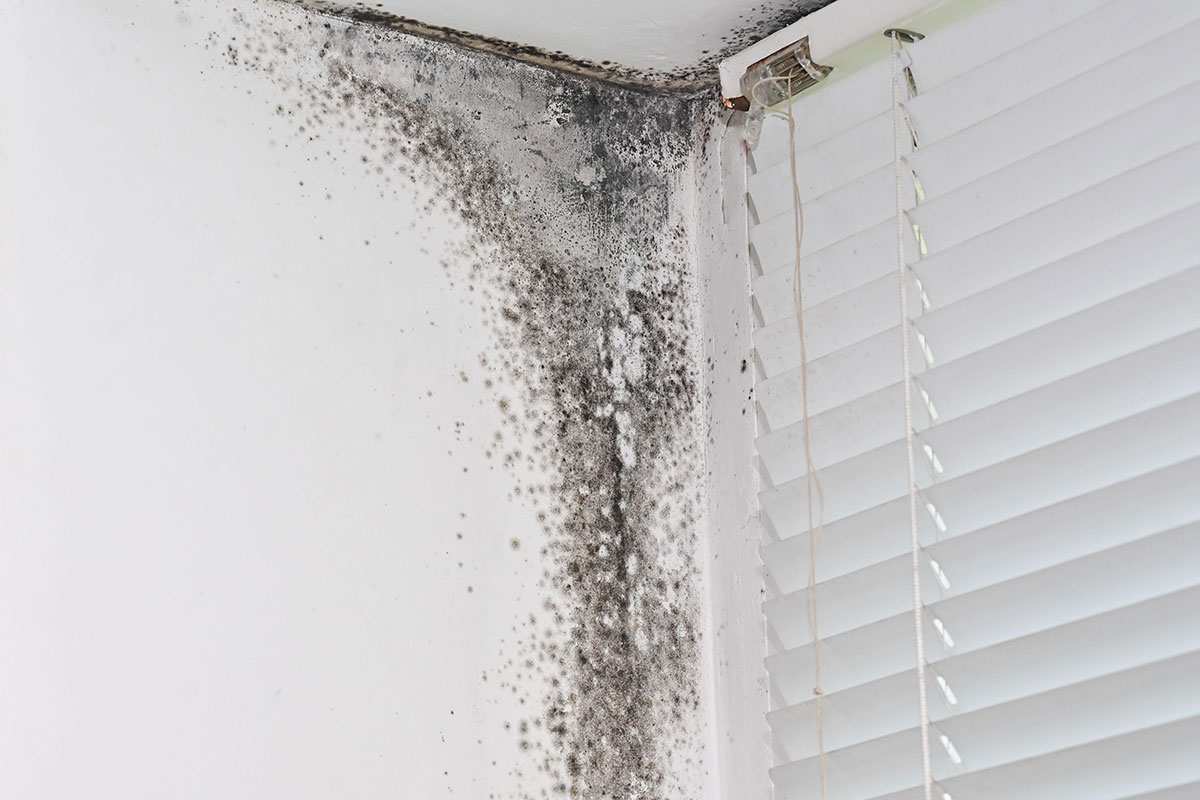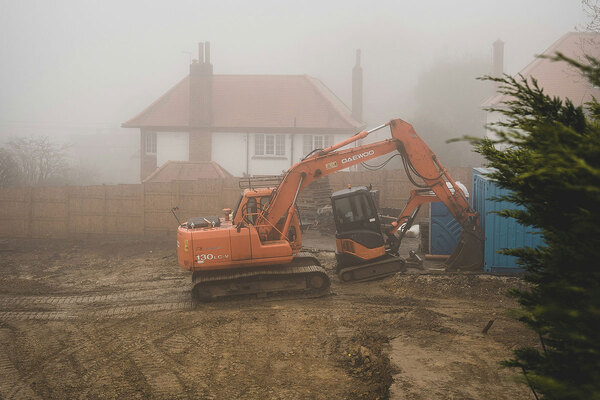CPD module: designing new builds with indoor air quality in mind
Could the drive for energy efficiency in new builds be at the expense of indoor air quality? Dr Jenny Brierley, former housing association chief executive and indoor air quality researcher, explains, in this CPD module in association with safety technology specialist Aico.
Read the article, take a quiz at the bottom of this article, earn CPD minutes

In association with:
![]()
Learning outcomes
After reading this article, learners will be able to:
- Understand what indoor air quality is, why it is important, and which factors contribute to it
- Understand why the drive for net zero might influence air quality in social homes
- Describe why increasing airtightness of new homes needs to be balanced with effective ventilation
- Explain why designing new build homes with good air quality cannot and should not be the sole responsibility of development teams
- Detail who needs to be involved in the design, delivery and maintenance of new builds with good indoor air quality
- Detail the role of resident engagement to the design and maintenance of homes with good indoor air quality
As part of the drive towards decarbonisation, new build homes are required to be energy efficient. This includes making the home as airtight as possible, to prevent heat escaping. Unless homes are carefully designed, with attention to effective ventilation, this can lead to homes that are energy efficient but have poor air quality. In designing, constructing and maintaining new homes, it is important that air quality is taken into account alongside energy efficiency.
This article considers the potential challenges of balancing these two agendas. It explores which teams need to be involved in creating homes that are set up for good indoor air quality, and how to maintain standards.
What are the challenges in ensuring new homes have good indoor air quality while also supporting decarbonisation?
Good indoor air quality is important to a safe and comfortable home. Inappropriate temperature, moisture and/or pollution levels impact on health and make an environment uncomfortable.
There is a growing focus on securing good indoor air quality in homes generally and in social homes specifically.
The December 2020 death of two-year-old Awaab Ishak from a respiratory condition has led to a particular focus on damp and mould, and associated legislative and regulatory change.
This is an issue increasingly raised with the Housing Ombudsman – in 2020-21, there were 1,993 enquiries and complaints made about damp, mould and leaks, with a 77% increase in the number of complaints raised in 2021-22. In 2022-23, the figure had increased to 5,398 complaints.
At the same time as the prioritisation of good indoor air quality, there is urgent attention on reducing carbon emissions to combat climate change. According to official government figures, the use of fuel and emission-generating products in buildings is estimated to have been responsible for 20% of UK greenhouse gas emissions in 2022. Of these, 67% were from fuel combustion in residential buildings. This means that the housing sector has a particularly important role to play in work to reach net zero.
Reducing heat loss from homes by increasing airtightness is an important way of reducing carbon emissions. This is easier to do in new homes and so, over time, regulations have become stricter in this area.
Also notable is that every single new dwelling now has to have an airtightness test completed. For the likes of Passivhaus homes, extreme airtightness is a central feature. Under this international building standard for energy efficiency, dwellings must be almost entirely airtight. From early next year, all new homes in Scotland will have to meet a Scottish version of the Passivhaus standard.
While airtightness greatly improves a home’s energy efficiency and reduces its environmental impact, indoor air quality depends on good ventilation. If insufficient attention is paid to effectively ventilating new homes, the result may be uncomfortable and unhealthy properties.
Creating the best new homes involves balancing the need for low environmental impact with good indoor air quality. This must be factored into the design and planning of new social homes.
How is good indoor air quality defined? What contributes to it?
- Indoor air quality simply refers to the composition and condition of the air within and around buildings.
- Temperature, moisture and pollution all contribute to indoor air quality levels.
- Poor indoor air quality can affect health. It can also affect the comfort of those within a building, for instance through extremes of temperature.
- Good indoor air quality equates to: humidity always being between 40% and 60% throughout a building; controlled temperatures that, in the UK, ideally do not fall below 1°C or go above 21°C in living rooms; an indoor CO₂ level of below 1,000 parts per million, which indicates a low level of pollutants and equates to a fresh air rate of eight litres per second per person.
- Good indoor air quality involves controlling pollutant levels and ensuring appropriate ventilation.
- Some landlords use technology to monitor the key parameters of indoor air quality. This can help identify any issues as they emerge, and confirm whether the intended air quality is being achieved in new build homes.
Who needs to be involved in ensuring good indoor air quality is factored into the design and planning of new social homes?
A commitment to good indoor air quality should start with the senior leadership of a social landlord. Most housing providers will have a publicly stated mission to create and maintain healthy homes. This has not always encompassed a detailed consideration of indoor air quality, but it must now explicitly do so.
Chief executives and board members should state that providing healthy homes includes providing homes with good air quality. It should be recognised as an essential health issue.
In a practical sense, clearly the design and development team will be responsible for ensuring plans encompass a consideration of air quality. This can valuably include:
- Ventilation planning. In an airtight building, ventilation needs to be carefully planned and maintained. This may mean installing the likes of mechanical ventilation with heat recovery and – importantly – doing so with an understanding of what it will be like to live in the property. Some research has revealed properties in which units have been installed on internal walls, rather than solid outside walls. This creates vibrations and noise, and increases the odds that residents will turn the system off – with negative effects on how healthy the home is to live in. In other instances, outlets were found to be installed above the only obvious position for a double bed in a large bedroom. This led some residents to tape over the units to try to prevent uncomfortable drafts.
- Being realistic about the amount of moisture likely to be present in the home. In creating designs for new homes – and, specifically, planning for ventilation and good indoor air quality – realistic assumptions must be made about how properties will be occupied and used. These realities will have an impact on how much moisture is in the air, and therefore also on indoor air quality. Plans for ventilation and layout need to be made accordingly. Most social homes are likely to be fully occupied, for instance, meaning a need for greater air flow to maintain air quality. In many homes there will be children or babies, which means a greater need to wash and dry clothes than if a home is only occupied by an adult couple. There may also be nowhere convenient to dry clothes indoors, and no appropriate outdoor space either. This all means high moisture levels. Social properties are also often open plan, which has an impact on where moisture becomes concentrated in the home and where ventilation is most needed.
- Thinking ahead. Mechanical ventilation systems need maintenance. This needs to be kept in mind when choosing the placements of units – they need to be somewhere that is easy for maintenance staff to
access. Equally, however, this cannot be the sole consideration. A unit that is positioned conveniently for maintenance staff but inconveniently for residents is unlikely to be used correctly. This will lead to poor indoor air quality.
How can design and development teams be supported to plan homes that prioritise air quality?
The responsibility for creating healthy new homes that prioritise the delivery of good air quality should not fall solely to design and development teams.
Housing managers can provide valuable insight into the concerns and needs of different groups of residents – as, of course, can residents themselves through co-production approaches. Maintenance staff might helpfully feed in to decisions on specific ventilation equipment.
This sort of collaboration avoids one of the major stumbling blocks in creating new homes with good indoor air quality – namely, the tendency for there to be poor connections between the development and occupation phase of a scheme.
Ideally, there should be a feedback loop: colleagues should feed in as the design and development teams plan new schemes; that insight should be taken into account as plans are made; and, once homes are occupied, information on any issues that could impact air quality should be fed back to the design and development teams to be taken into account for future developments.
77%
Increase in complaints to Housing Ombudsman about damp and mould in 2021-22
40-60%
Range of ideal humidity level in a home
What needs to be considered once new homes are occupied to ensure that planned indoor air quality is secured?
Resident engagement, specifically sharing of knowledge with residents, is crucial at the point of occupation. This needs to be multifaceted. One aspect needs to be education on the systems in place in the home that seek to maintain air quality.
Notably, the running costs of mechanical ventilation can be a concern for those on low incomes. If they are struggling financially and need to choose between heating, cooking and ventilation, it is unlikely that ventilation will be seen as a priority.
Indeed, some research has shown that it is common for mechanical ventilation to be switched off in homes experiencing fuel poverty.
Yet such systems in fact take very little electricity to run, and provide more reliable, consistent and constant ventilation than, for instance, opening windows at random.
Other preconceptions might be that the windows should not be opened at all in homes with mechanical ventilation, or worries about harmful materials building up in ventilation ducts. Talking through all this early on and challenging mistaken beliefs is important in supporting residents to have the healthiest possible homes.
In running through how systems work, it can be helpful to have illustrated guides specific to the type of set-up in someone’s home. These are commonly handed over as a hard copy when residents are moving into a property.
Realistically, however, ventilation and indoor air quality are not going to be foremost in the minds of anyone moving into their new home. Ensuring material can be easily accessed and referred back to as needed is therefore helpful. This might include via a website or a resident app.
It is not just the first residents to occupy a new build who need this support. Each time the occupation changes there needs to be an effort to support the new residents in understanding how ventilation in the home works, and how the social landlord is helping to support good indoor air quality.
This means ensuring there is continuing corporate knowledge of which systems have been installed in which properties, and of the relevant design aspects of those properties. Too often a scheme is developed and by the time occupancy has changed two or three times, those staff members who were heavily involved in the initial occupation are no longer in the same post or the same organisation.
This leads to a ‘corporate forgetting’ of information that helps residents live in the healthiest possible homes.
Mutual exchanges can present a particular challenge. Every association will have a different process here, but it is not uncommon for the outgoing tenant to explain the appliances in the home to the incoming tenant.
If the tenant has never fully got to grips with the ventilation system, or has found it noisy and inconvenient, or believes it to be expensive to run, it is that knowledge – and those misunderstandings – that will be passed on to the new tenant.
This then means continued poor air quality in that home, purely through lack of knowledge and support. Social landlords should instead ensure mutual exchanges still involve information-sharing between the landlord and the new resident on these issues. This can, again, valuably include sharing illustrated information via either hard copy or electronic means.
Areas to reflect on
- To what extent do you feel your staff across your organisation see indoor air quality as central to healthy homes? If there are gaps in understanding, why do you think these exist? How might they be addressed?
- What insight might you have that would help your design and development colleagues to plan new homes that prioritise indoor air quality? How might you share this insight?
- How does your organisation support residents to understand how to get the best out of the equipment in their home, including that which influences air quality? Is there more that could be done?
- What one point in this piece do you want to share with colleagues who may not have read it? How will you share it?
Summary
Good indoor air quality is an important aspect of creating and maintaining healthy homes. Delivering it involves controlling the level of pollutants in a home, including through adequate ventilation.
The drive to net zero means new build homes are required to be energy efficient. This necessitates buildings with high degrees of airtightness, which can in turn present challenges for ventilation.
In designing, constructing and maintaining new homes, the need for airtightness must be balanced with the need for the ventilation that leads to good indoor air quality.
A number of teams need to be involved in the creation of new build homes that support good air quality. It is not merely the responsibility of design and development teams. Insight from the likes of housing managers and repairs and maintenance staff is important. So too is resident engagement. Any equipment to support indoor air quality is only going to make a difference if it is used as intended, and residents can only use it as intended if they understand how it works.
Ensuring the correct balance between these perspectives, and between energy efficiency and ventilation, will help support the healthiest possible new homes.
Now get your CPD points
References and further reading
- Brierley, J. (2021), Fresh air and low carbon… Why is maintenance the missing link and how can this be remedied?
- Menon, R. and Porteous, C., Mackintosh Environmental Architecture Research Unit (2012),
Design Guide: Healthy Low Energy Home Laundering - Inside Housing (2023), Social landlords should make indoor air quality a health responsibility, researcher says
- Stockholm Environment Institute (2024), What you need to know about indoor air quality and social housing in the UK
- Bunn, S. and Duffield, G. (2023), UK Parliament Post, Indoor Air Quality
- Sharpe, T. (2024), Inside Housing, CPD module: the importance of indoor air quality
- Blakeway, R. (2023), Inside Housing, CPD module: understanding the issue of damp and mould
- Department for Energy Security & Net Zero (2024), 2022 UK Greenhouse Gas Emissions, Final Figures
Inside Housing CPD content archive
Find out more about Inside Housing’s CPD offering by clicking here
Fostering data-driven engagement with residents on fuel poverty
Watch the full webinar at the end of this article in association with Switchee, Fostering data-driven engagement with residents on fuel poverty
How have fire safety regulations changed and how can providers remain compliant?
Recent legislation aims to improve fire safety in buildings by increasing accountability and improving fire risk assessments. Andy Frankum, chair of the National Social Housing Fire Strategy Group, explains more
Tenancy fraud – how to spot it and how to fight it
Stephanie Toghill of Islington Council and vice-chair of the Tenancy Fraud Forum explains what tenancy fraud is, how it occurs and how to tackle it
How landlords should deal with TSMs, one year on
Tenant satisfaction measures were brought in by the regulator last year and assess whether landlords are providing quality homes and services to tenants. Tim Quinlan at Riverside explains how it has adjusted to the changes
The importance of good quality data to good air quality
Watch the full webinar, The importance of good quality data to good air quality
Making data-led decisions in social housing
How data is stored and used is crucial for decision-making across the social housing sector. Dr Laura Wales, head of data at Raven Housing Trust, explains why
Building reciprocal relationships with residents
Reciprocity is essential for social landlords to build successful relationships with residents. Anna de Souza and Ingrid Smith at Peabody explain how to go about it
How can social landlords assess whether retrofit is delivering intended performance improvements?
Watch the full webinar, How can social landlords assess whether retrofit is delivering intended performance improvements?
How social landlords should assess and report performance on ESG
Social landlords are increasingly expected not only to consider their environmental and social impact, but also to demonstrate it. Andy Smith, head of impact services at The Good Economy, outlines what providers need to consider
Designing new builds with indoor air quality in mind
Could the drive for energy efficiency in new builds be at the expense of indoor air quality? Dr Jenny Brierley, former housing association chief executive and indoor air quality researcher, explains
AI and robotic process automation – how to use them in social housing
Artificial intelligence and robotic process automation could transform the way social landlords operate and create efficiencies. Monica Quintero, head of digital at Stockport Homes Group, explains the benefits and pitfalls
How to approach decarbonisation policy and strategies
The policy environment on decarbonisation and retrofit is evolving, so how can social landlords continue to build strategies to meet net zero? Richard Ellis, director of sustainability at Peabody, explains
Addressing the development gap in social housing
There is a significant gap between the social housing available in the UK and the number of people who need it. Vicky Savage, executive group director for development and sales at L&Q, looks at the ways in which social landlords can support and increase further development
The importance of indoor air quality
What is indoor air quality, why is it important, and how can it be improved in social housing? Professor Tim Sharpe, head of the department of architecture at the University of Strathclyde, explains
The Procurement Act 2023 – how will it affect landlords?
The Procurement Act 2023 passed into law at the end of last year, with full implementation set for October 2024. How does it change procurement processes, what stays the same and how should social landlords adapt? John Wallace, director of procurement at Clarion, explains all
Funding options in social housing
What does the current finance environment look like in the social housing sector, and what are the different options? Arun Poobalasingam, funding and marketing director at affordable housing aggregator The Housing Finance Corporation, explains more
The new building safety regime
Why has the new building safety regime been introduced, what is different, and what do social landlords need to do to ensure compliance? Andrew Moore, head of operations for building control and planning service at the Building Safety Regulator, explains
The recruitment and retention challenge in repairs and maintenance
The social housing sector faces a challenge in recruiting and retaining repairs and maintenance staff. Mark Coogan, Liz O’Connor, Paul Longman, Russell Thompson and Mike Wilson explore the causes and some potential solutions
Co-production
What is co-production, how can it be fostered, and what are the potential benefits of getting it right? Learn how the concept can be applied successfully to social housing
Psychologically informed environments
How psychologically informed environments take into account how previous trauma might impact people who have experienced homelessness and how they interact with support services
Understanding damp and mould
Housing ombudsman Richard Blakeway discusses how social landlords can tackle the problem of damp and mould in their homes
Tenant satisfaction measures
Watch the full webinar How to collect, report and act on tenant satisfaction measures








